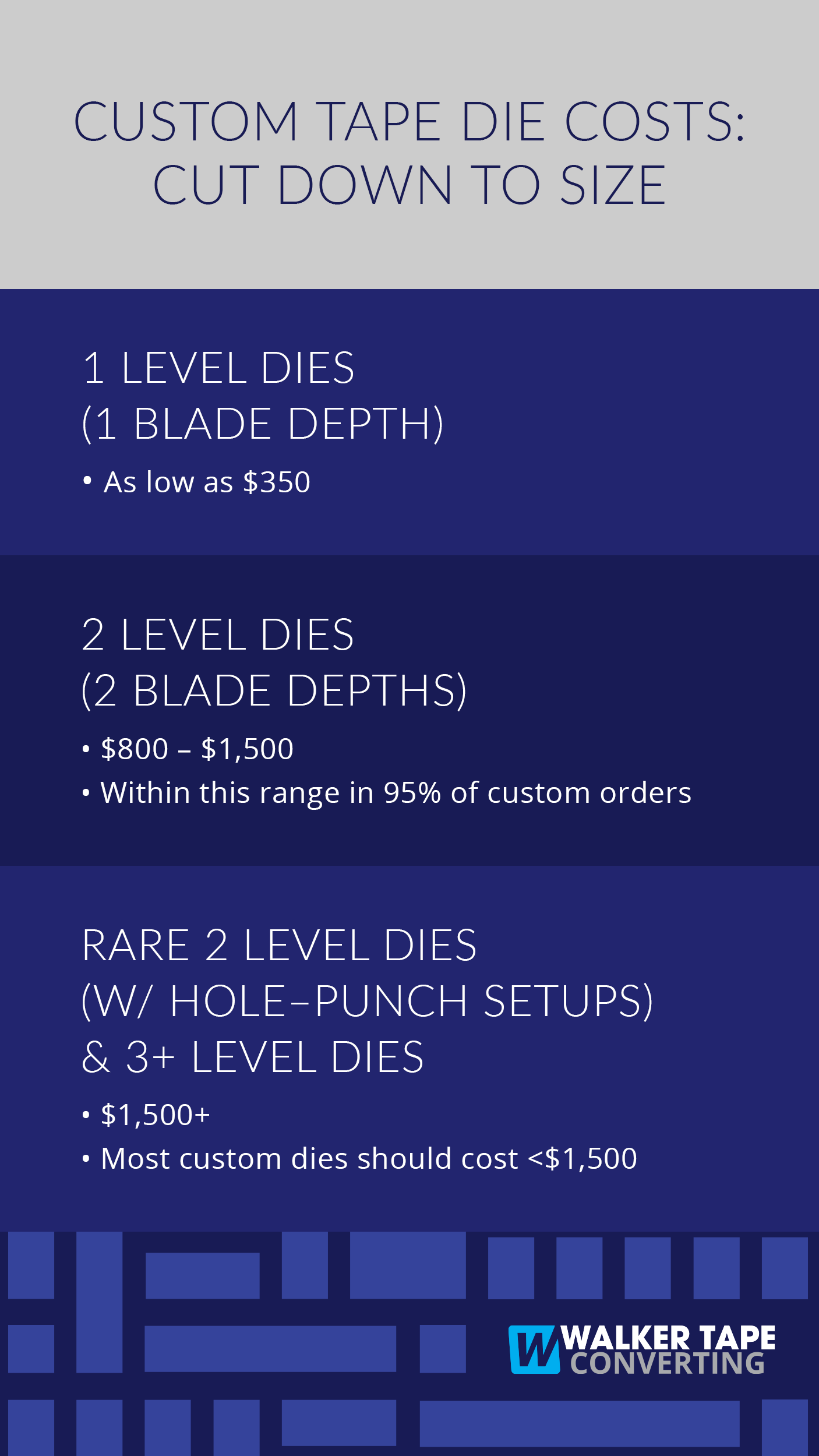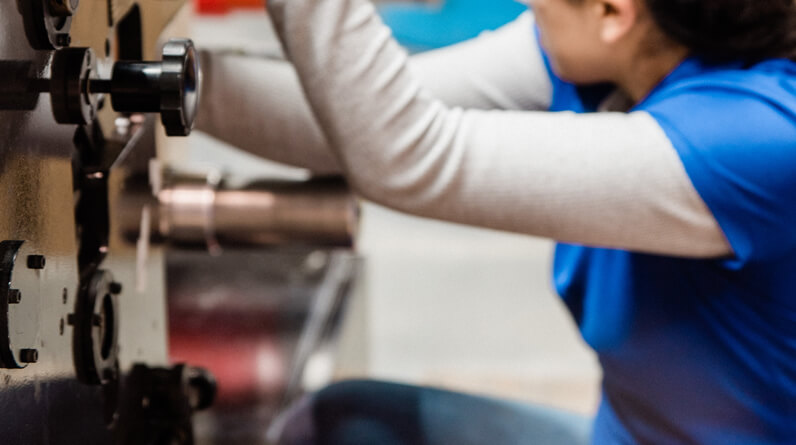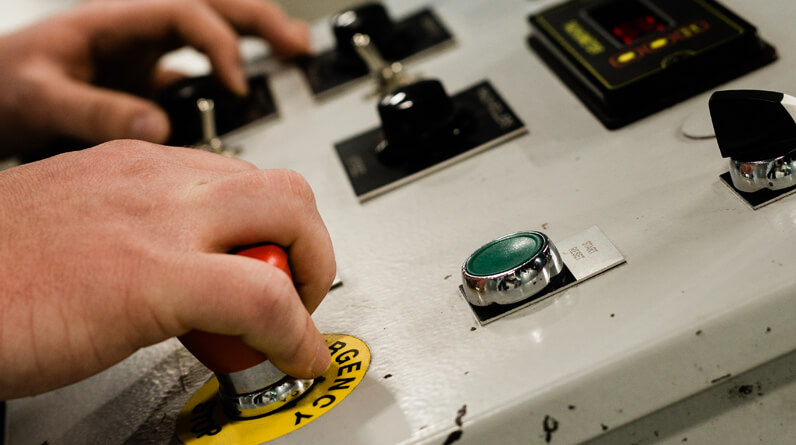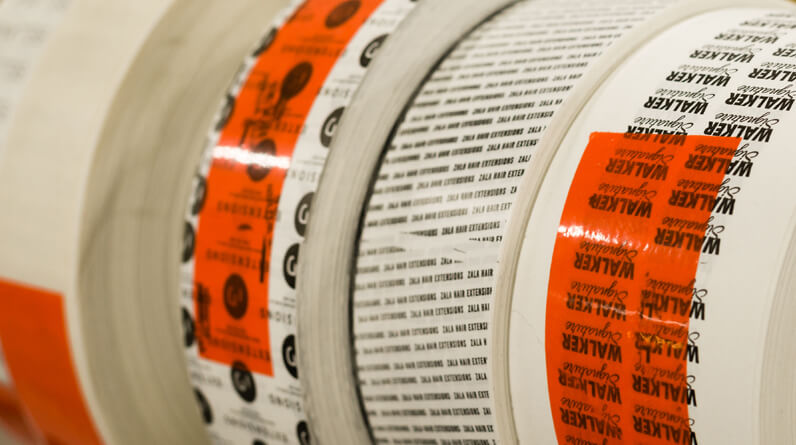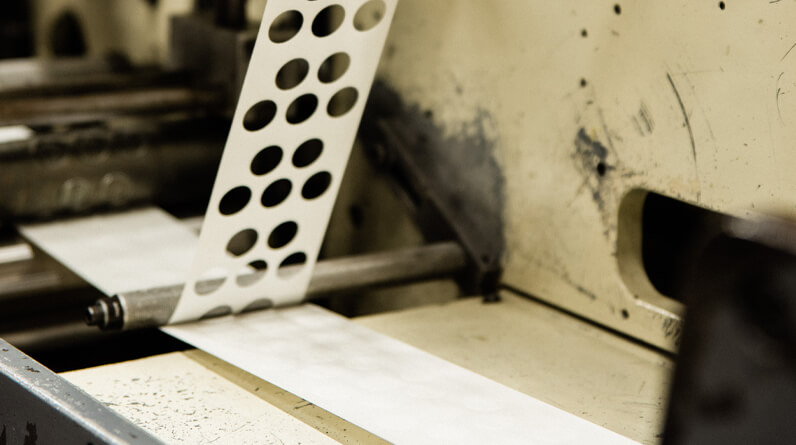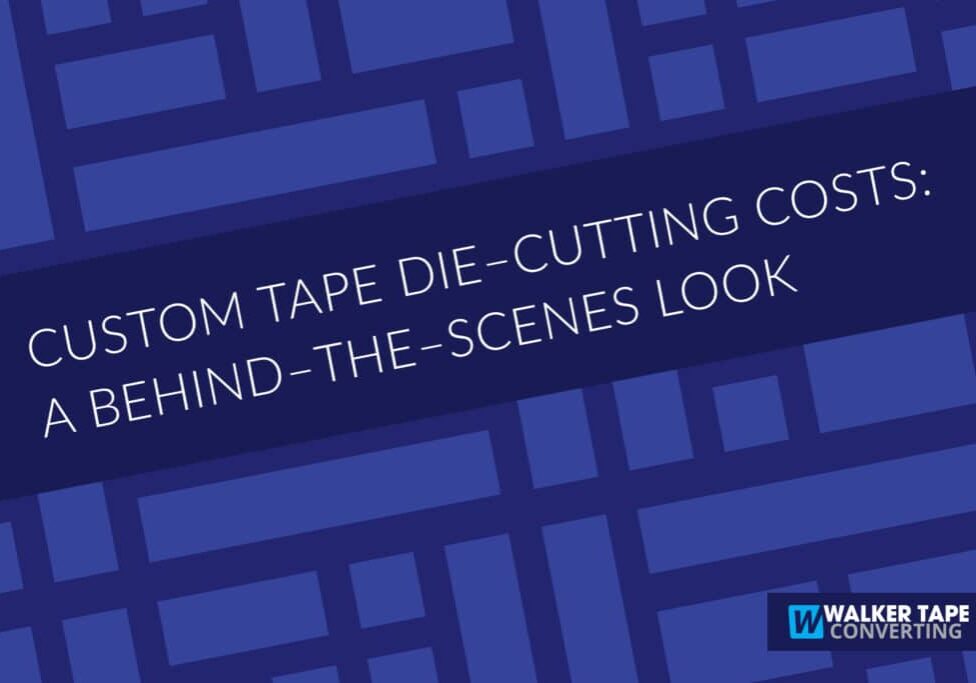
What Is Custom Die-Cutting?
Die-cutting is the process of cutting material using a die tool. Think cookie cutter, but at the automated mass production scale. Die-cutting creates all kinds of shapes out of all kinds of materials across various industries: foams, plastics, paper, rubber, you name it.
When the material you need die-cut involves tape, then we call it tape die-cutting. More often than not, when you want a custom tape solution for your business, you’re going to want to have a custom die made. Custom tape die-cutting allows us to create the exact shape, size, and function of tape required to turn your project into a success.
That said, custom services such as tape die-cuts can field a lot of different fees when you ask for quotes from adhesive tape converters. For this reason, the following blog gives you an honest look at what you should expect when it comes to custom die costs.
Watch Out for Inflated Die Costs
Like we’ve mentioned in a previous red-flags blog post, there are some bad actors out there that take advantage of a business’s trust. One of the ways they do so is by unnecessarily hiking up fees related to tape dies. But they can really only do this as long as customers don’t know what a fair price should be.
The good news here, of course, is that we’re taking you through fair price ranges. Feel free to use the below information to help you steer away from those who inflate die costs.
Why Unreliable Tape Converters Inflate Die Costs
Instead of investing in your success, die-cost inflators see your business as a one-off sale. For example, let’s say a startup company seeks custom die-cutting services. A converter that hikes die fees assumes the startup likely won’t succeed, so they hope to make as much business off the purchase order as they can.
Here’s an especially tricky way some hide their overcharging die practices. There’s an especially misleading trick that unreliable converters to be aware of. They might offer low per-piece prices to attract your business. But then they make up the difference with over-priced die fees.
How Much Should Custom Dies Cost?
The answer to this question depends on the complexity and number of blade depths of the die you need. A blade depth is the number of distinct levels a die uses blades to achieve the desired die-cut piece.
- A single-level die: One blade depth
- Example: one blade scores the top liner to make tape easy to remove.
- A double-level die: Two blade depths
- Example: one blade scores the top liner; another blade cuts tape into shapes on the back liner.
- A triple-level die: Three blade depths
- Example: one blade scores the top liner; another blade cuts tape into shapes on the back liner; another blade cuts the back liner into its own needed shape.
Single-Level Custom Die-Cutting Dies for Tape
- As low as $350
Single-level dies with only one blade depth can be as low as $350. These dies might be the simplest option for custom die fabrication, but they still offer a lot of variability.
As mentioned above, a single-level die could just use a scoring blade to make a tape’s top liner easier to remove. Another single-level die could be like a cookie cutter and completely cut out tape into the needed shapes. But there are also single-level dies we use often to kiss-cut your tape.
Kiss-cutting is a form of die-cutting that doesn’t cut through all the layers of the tape. An example here would be cutting the tape into shapes without cutting into the back liner at all. So, they’d be similar to cookies on a baking sheet. The easy way to remember this name is to picture the blade only “kissing” that back liner instead of cutting through it. Believe it or not, that image is exactly why it’s called kiss-cutting.
Double-Level Custom Die-Cutting Dies for Tape
- Most commonly between $800-$1,500
About 95% of double-level dies with two blade depths should fall somewhere around $800 to $1,500. Since the die construction requires two distinct levels of blade operations, they tend to be more complicated to make. But the one-time expense is almost always worthwhile since they die-cut your tape in two ways all at once. This can effectively double production rates.
Let’s say you need tape cut into specific shapes for your product, but you also want the top liner easy to remove. A double-level die is a great choice here because it can both cut the shapes and score the liner with just one die-cutting process.
There are some rare occasions where a more complex two-level die may cost more than $1,500. A two-level die may need more moving parts to perform certain functions, such as a hole-punch setup. But again, 95% of the time, custom two-level dies should run in the above price range.
Triple-Level or More Die-Cutting Dies for Tape
- $1,500+
Triple-level dies with three blade depths are extremely rare but do exist. Considering the complexity of the multiple levels of blade depths involved, they can cost more than single- or double-level dies.
How Much You Save with Custom Die-Cuts
- Depending on your production needs, die-cutting can easily save your business six figures a year!
Enough about costs . . . by far the best thing about die-cutting is how much money it saves you. Not just with an eye toward the future either, you save immediately with custom die-cut tape.
Here’s a quick case study to highlight the immediate payoffs of die-cutting tape. One customer of ours in the medical industry had their employees manually cutting tape to match their product shape. We offered our custom die-cutting capabilities, and in the time it took them to make one product, we produced 250.
Our custom die-cutting services saved them more than $200,000 a year.
Of course, we understand that seeing die costs included in a quote request can be intimidating. After all, we’re always looking for ways to improve our ROI. But the savings you reap from custom die-cut tape pay off big.
Interested in a potentially six-figure boost in resources and added efficiency? Ask our experts if die-cutting is the best route for your business!

